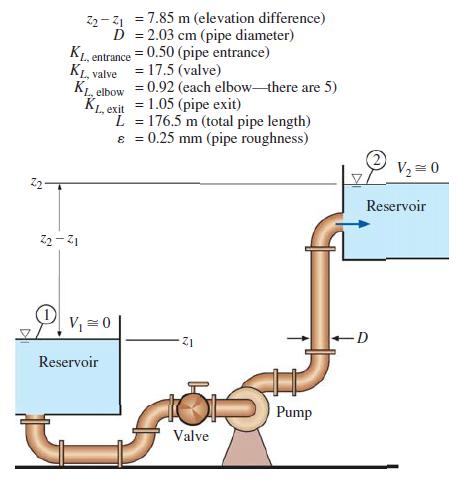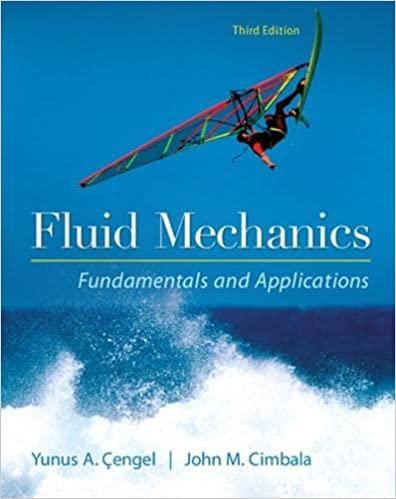Consider the pump and piping system of Prob. 1443. Suppose that the lower reservoir is huge, and
Question:
Consider the pump and piping system of Prob. 14–43. Suppose that the lower reservoir is huge, and its surface does not change elevation, but the upper reservoir is not so big, and its surface rises slowly as the reservoir fills. Generate a curve of volume flow rate V̇(Lpm) as a function of z2 – z1 in the range 0 to the value of z2 – z1 at which the pump ceases to pump any more water. At what value of z2 – z1 does this occur? Is the curve linear? Why or why not? What would happen if z2 – z1 were greater than this value? Explain.
Data from Problem 14–43
A water pump is used to pump water from one large reservoir to another large reservoir that is at a higher elevation. The free surfaces of both reservoirs are exposed to atmospheric pressure, as sketched in Fig. P14–43. The dimensions and minor loss coefficients are provided in the figure. The pump’s performance is approximated by the expression Havailable = H0 – aV̇2, where shutoff head H0 = 24.4 m of water column, coefficient a = 0.0678 m/Lpm2, available pump head Havailable is in units of meters of water column, and capacity V̇ is in units of liters per minute (Lpm). Estimate the capacity delivered by the pump.
Data from FIGURE P14–43

Step by Step Answer:

Fluid Mechanics Fundamentals And Applications
ISBN: 9780073380322
3rd Edition
Authors: Yunus Cengel, John Cimbala





